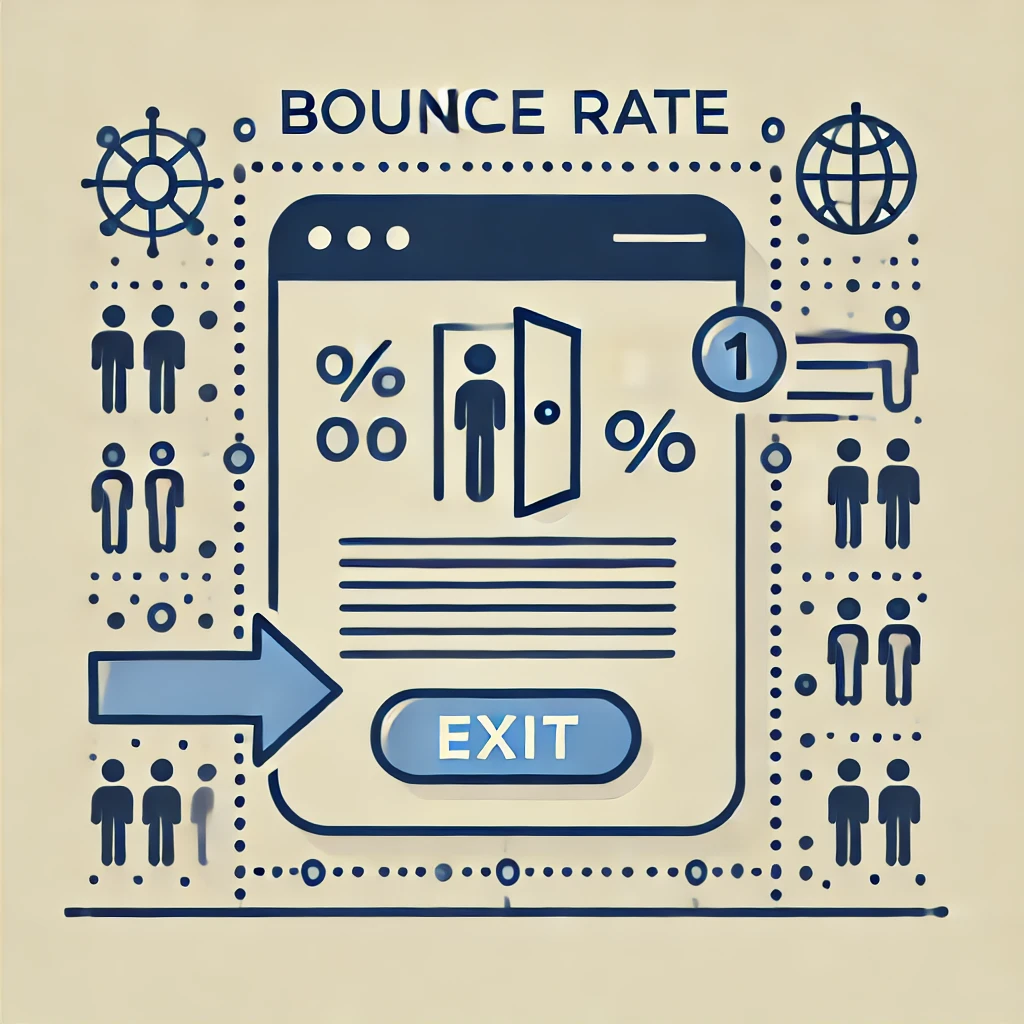Your cart is currently empty!
Bounce Rate Term Meaning
Posted by:
|
On:
|

Detailed Explanation
Bounce Rate is calculated by dividing the number of single-page sessions by the total number of sessions on the website. A high bounce rate indicates that visitors are leaving the site quickly without interacting with other pages, which can signal issues with content relevance, user experience, or website design. Conversely, a low bounce rate suggests that visitors are finding the content engaging and are exploring multiple pages. Reducing the bounce rate involves improving website usability, ensuring content relevance, and optimizing the site for faster loading times.
Key Points
- What it is: The percentage of visitors who leave a website after viewing only one page.
- Why it matters: Indicates user engagement and website performance, helping identify areas for improvement.
- How to use it: Monitor bounce rate to assess website effectiveness and make necessary adjustments to improve user engagement.
Examples
- High Bounce Rate: An e-commerce site with a high bounce rate may indicate that visitors are not finding what they are looking for, leading to quick exits.
- Low Bounce Rate: A blog with a low bounce rate suggests that readers are finding the content valuable and are exploring other articles.
Related Terms
- User Engagement
- Conversion Rate
- Website Analytics
- Session Duration
Frequently Asked Questions
What is a good bounce rate?
A good bounce rate varies by industry and website type, but generally, a bounce rate between 26% and 40% is considered excellent, 41% to 55% is average, and 56% to 70% is higher than average but may not be a cause for concern depending on the site.
How can I reduce my website’s bounce rate?
To reduce bounce rate, improve website usability, ensure content relevance, optimize page load times, and create clear calls to action that encourage visitors to explore more pages.
What causes a high bounce rate?
A high bounce rate can be caused by factors such as irrelevant or low-quality content, poor website design, slow loading times, and a lack of clear navigation or calls to action.



